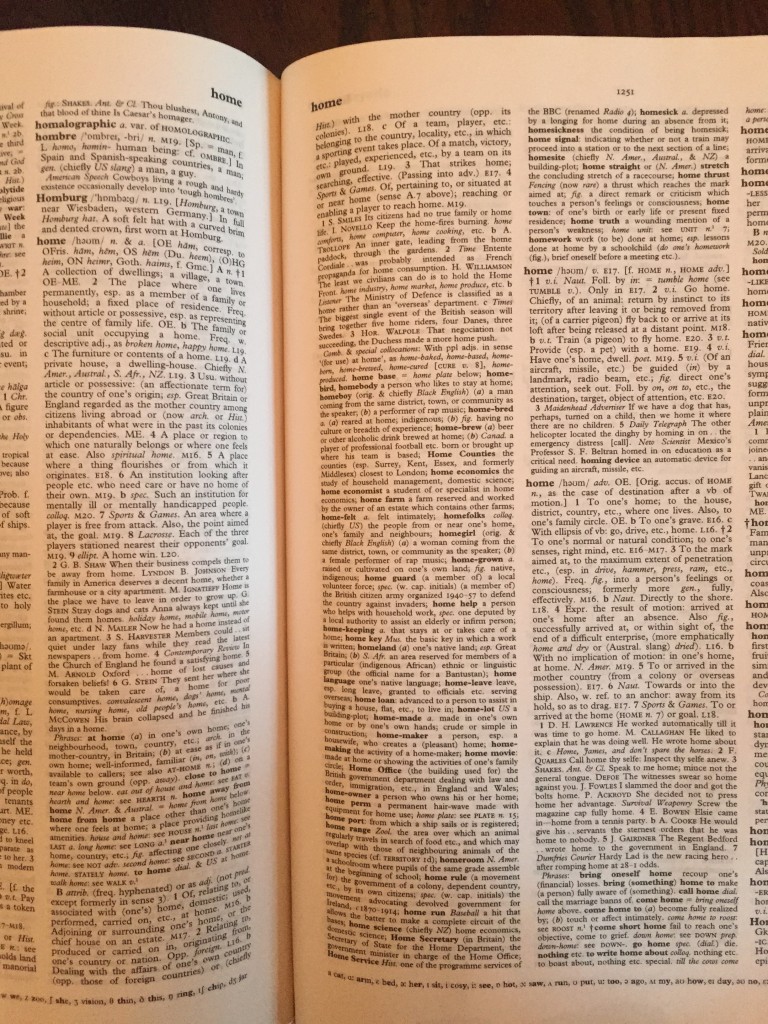“I’m coming home
I’m coming home
tell the world I’m coming home”
So the song goes, and it’s a familiar refrain. We all know the definition of that abstract four-letter word, whose actual meaning is unique to everyone who uses it. But here’s a funny question: when we talk about “coming home”, “going home”, “getting home” or “being home,” what role in the sentence does the generic place-name play: is it a noun, as most places tend to be, or, strangely, could it be an adverb?
Either or both, it seems. In this context, the word we commonly think of as a noun has neither a preposition (e.g. “to” home, “from” home, “at” home, etc.) nor a determiner (e.g. “my” home, “this” home, “second” home, etc.) — the two things that normally make a noun feel and sound like a noun. Our attention in these cases is focused more on the verb at hand: we’re talking about the way, means or direction that we’re coming, going or being — and that’s adverbial talk. To put it in grammatical terms, home — at least when we’re going or being there — is an “idiomatic locative noun” that is effectively standing in for an adverbial phrase (“to my home”). And that makes it an adverb.
The New Shorter Oxford English Dictionary devotes nearly an entire page to home, which shouldn’t come as a surprise given that it also steps out as both an adjective and a verb, so pervasive is the concept in our thoughts and language.
But there’s another standard usage of the word that might surprise you, especially if you’re American. As Oxford Dictionaries explains:
“The traditional form for the verbal phrase meaning ‘move accurately towards a target’ is home in on, not hone in on. More than a third of citations for this expression in the Oxford English Corpus are for hone in on, however, and in the US this form has become common even in edited text. Nonetheless, hone in on is still regarded by many as incorrect, and it remains relatively rare in British use.”
So as concrete and nominative as your home might seem to be, remember that it comes in many shapes and varieties, both literally and linguistically. There’s no place quite like it.
* * * *


